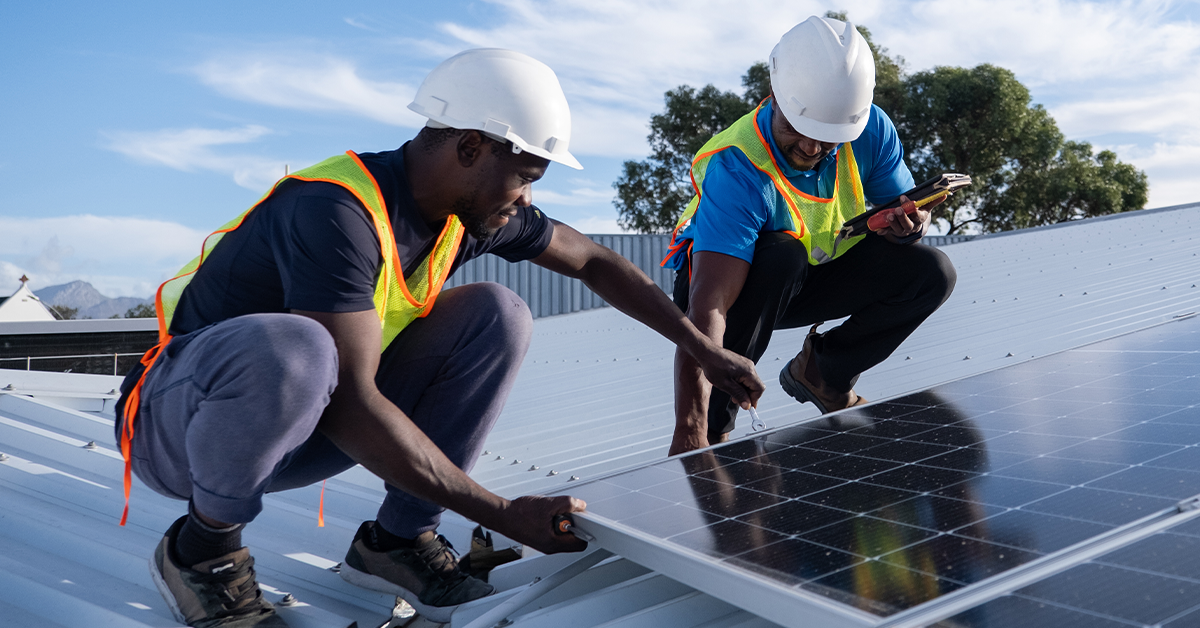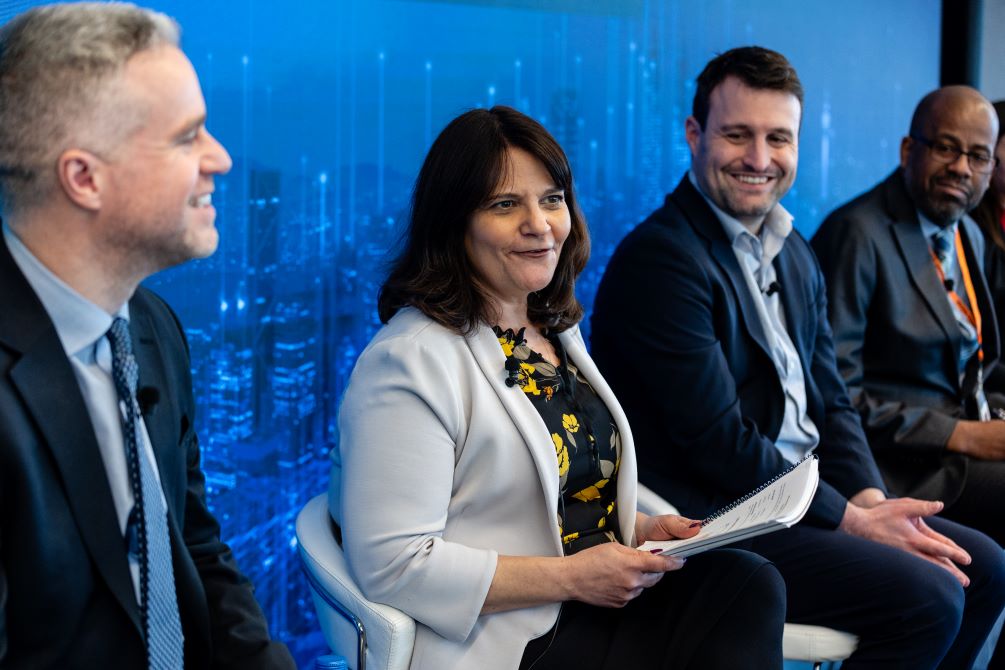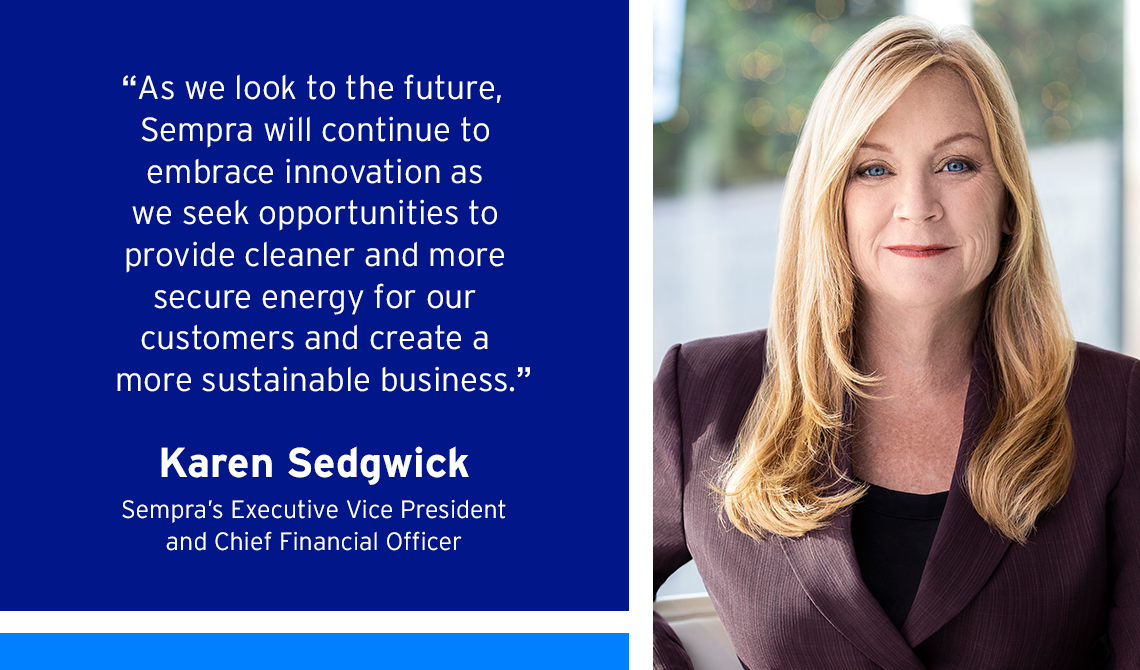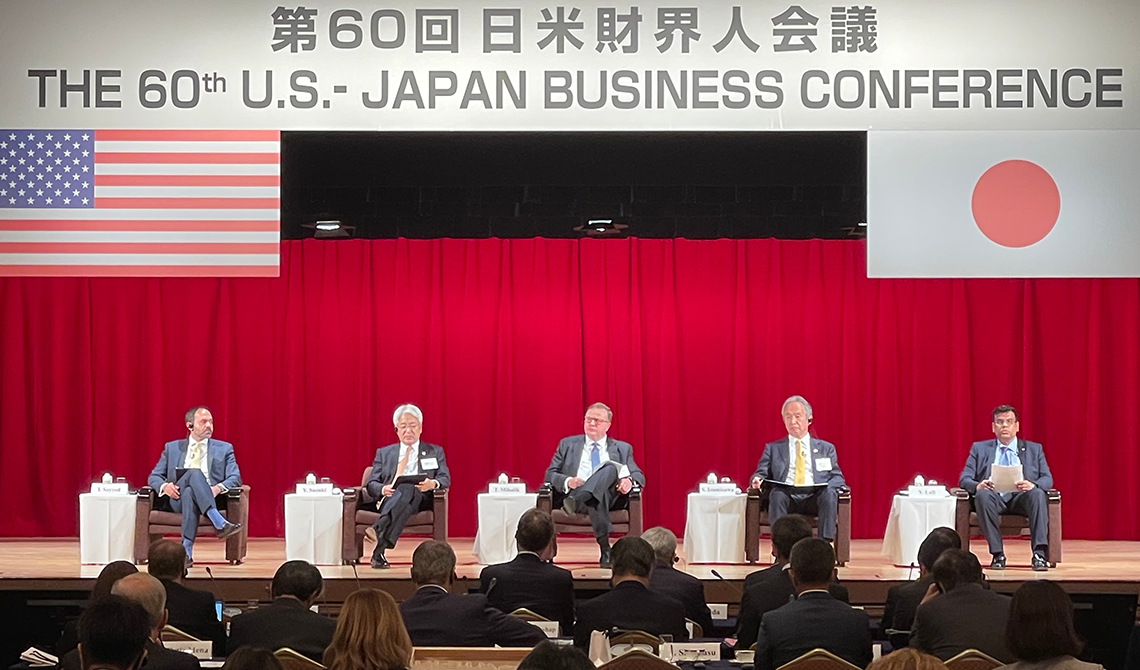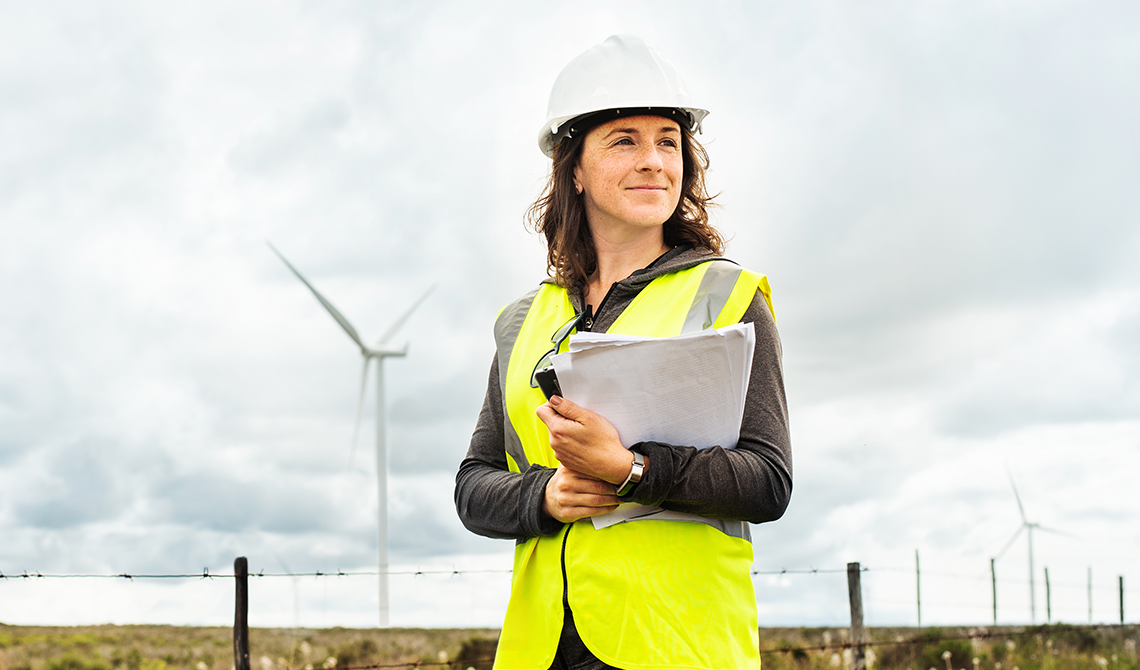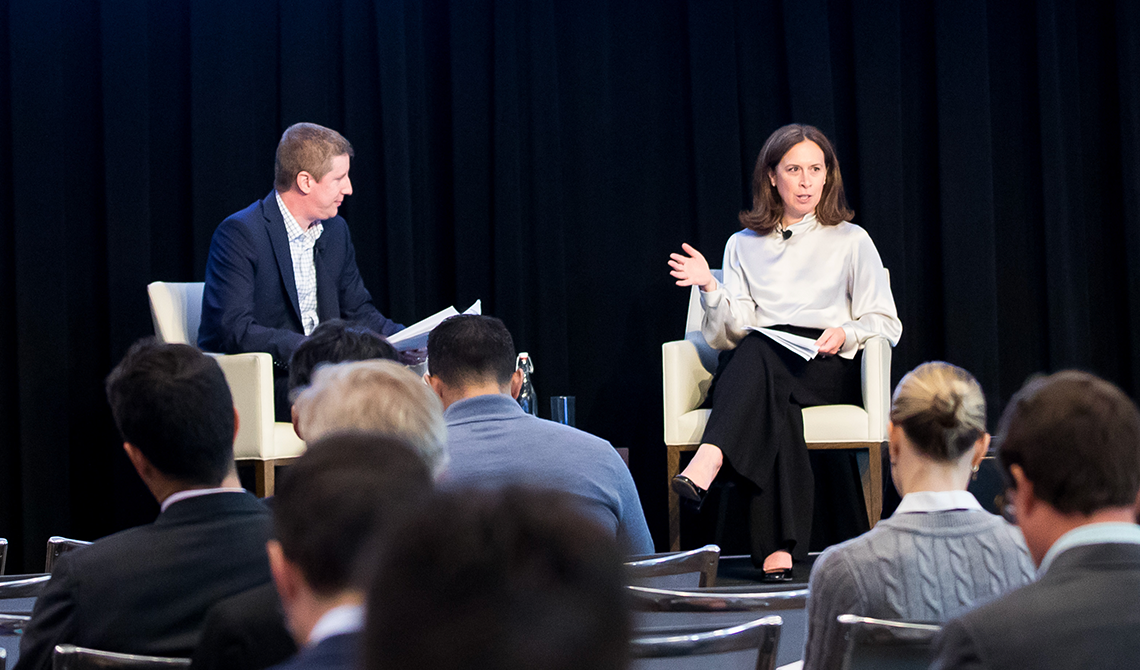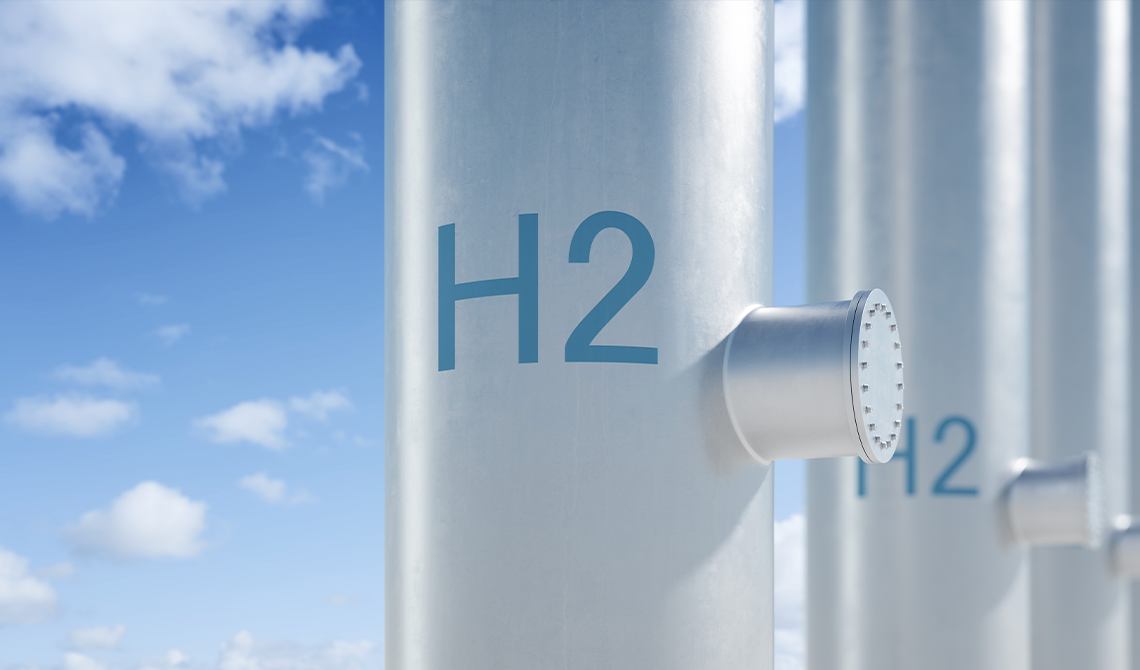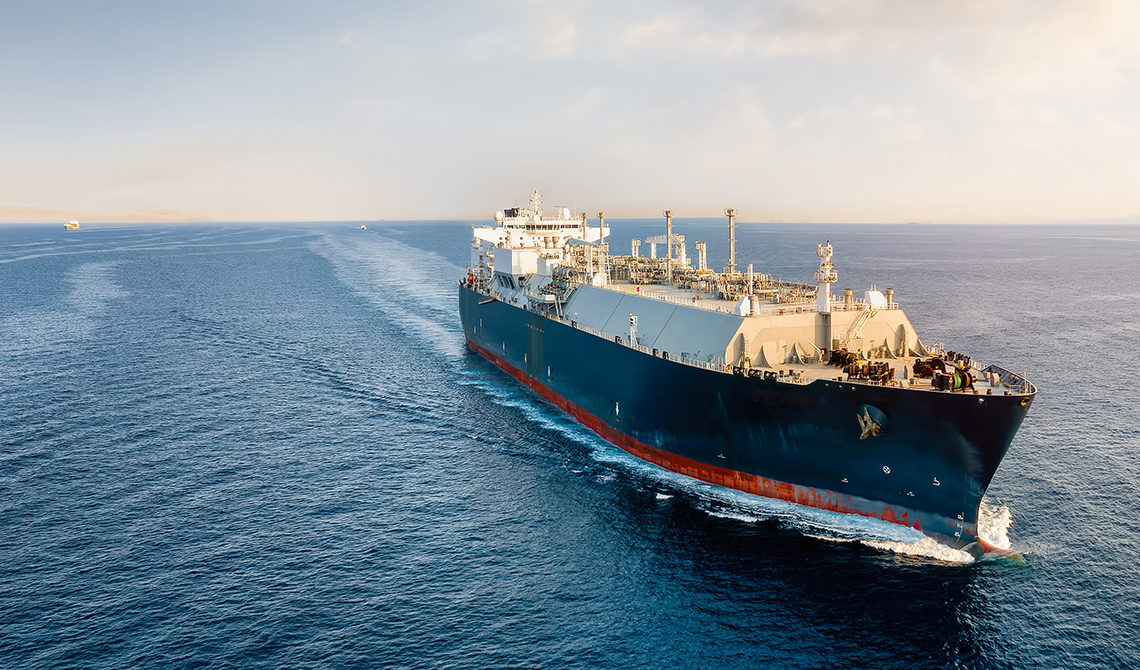You’ve seen the stories everywhere: More investments will be needed to modernize energy infrastructure and advance a lower carbon future. Specifically, in California and following the approval of the California Independent System Operator’s 2022 – 2023 Transmission Plan, you’ve seen more stories about investing in the transmission and distribution lines that make up our modern energy grid.
You might have wondered why power lines look different everywhere you go. For example, the power structures in your neighborhood might be different from the one you see while driving on the freeway. There’s a reason for that: different infrastructure delivers electricity in different ways.
Understanding the difference and benefits of both transmission and distribution power lines is important when talking about how energy can be reliably and effectively delivered to homes and businesses. Here’s what you need to know about transmission and distribution power lines and why energy infrastructure is worth the investment.
Transmission and distribution lines explained
So, what’s the difference between transmission and distribution lines? Simply put, transmission lines and the accompanying equipment are used to move large quantities of power from generating facilities to substations. The substations are then connected to distribution lines.
Transmission lines carry energy across a region, helping move energy from often rural production areas to population centers where energy demand is high. These power lines are typically installed on taller structures than distribution lines. In fact, an average 500 kilovolt (kV) transmission structure is about 150 feet tall and weighs about 40,000 pounds, and the voltage ranges from 69kV to 500kV.
On the flip side, distribution lines carry electricity from substations to your home or office. They are typically shorter than transmission structures, averaging about 40 to 50 feet tall and 2,000 pounds in urban areas, and typically operate in the 4kV to 12kV range with secondary voltage systems operating at less than 1000V. They also carry a lower voltage, but still enough to reliably power a home or office. The shorter distances and lower voltages allow for improved safety for customers.
To sum it up, transmission lines are like freeways, and distribution lines are like surface streets.
Why invest in energy infrastructure
Recently, the International Energy Agency published a new report, World Energy Outlook 2023, that forecasts the world will need to add or replace nearly 50 million miles of transmission lines by 2040 for countries to keep up with their climate and energy security goals.
The sheer volume of need is daunting, but the Sempra family of companies are helping fill the gap. Earlier this year, Sempra unveiled a record five-year capital plan to invest in utilities and infrastructure, much of which is expected to be invested in California and Texas to align with the states’ demands for upgrading and expanding infrastructure, while also maintaining safety, reliability and resiliency. The capital plan includes Sempra’s proportionate ownership of projected capital expenditures at unconsolidated entities and excludes projected capital expenditures attributable to noncontrolling interest.
The Sempra family of companies has a long history of building reliable energy infrastructure to serve Californians. In fact, Sempra California’s San Diego Gas & Electric dates back to 1881. SDG&E aims to provide safe and reliable energy by making diligent improvements to its electric system. The state’s latest transmission plan identified investment opportunities in SDG&E’s service territory, creating potential opportunities for SDG&E to use its expertise to further meet growing energy demands.
In addition to investing in new transmission lines, SDG&E is working toward building the next generation of distributed energy resource management systems (DERMS) to help bolster system-wide reliability. Many experts believe DERMS could play a role in modernizing energy networks because it is a structure that allows for real-time communication and control of electricity from distributed energy resources, such as rooftop solar and energy storage. SDG&E is also implementing a Local Area Distribution Controller, also known as a microgrid controller, which is designed to allow for remote control of SDG&E’s microgrids to help improve resiliency during power outages.
By identifying where energy needs are increasing, how they are changing and the type of infrastructure needed, Sempra California’s SDG&E could help provide communities with safe and reliable energy during the transition to cleaner sources of energy.
Find out more about Sempra’s operating companies’ rich history in building transmission infrastructure to help safely deliver reliable energy.
This article contains forward-looking statements within the meaning of the Private Securities Litigation Reform Act of 1995. Forward-looking statements are based on assumptions about the future, involve risks and uncertainties, and are not guarantees. Future results may differ materially from those expressed or implied in any forward-looking statement. These forward-looking statements represent our estimates and assumptions only as of the date of this press release. We assume no obligation to update or revise any forward-looking statement as a result of new information, future events or otherwise.
In this article, forward-looking statements can be identified by words such as "believe," "expect," "intend," "anticipate," "contemplate," "plan," "estimate," "project," "forecast," "should," "could," "would," "will," "confident," "may," "can," "potential," "possible," "proposed," "in process," "construct," "develop," "opportunity," "initiative," "target," "outlook," "optimistic," "poised," "maintain," "continue," "progress," "advance," "goal," "aim," "commit," or similar expressions, or when we discuss our guidance, priorities, strategy, goals, vision, mission, opportunities, projections, intentions or expectations.
Factors, among others, that could cause actual results and events to differ materially from those expressed or implied in any forward-looking statement include: California wildfires, including potential liability for damages regardless of fault and any inability to recover all or a substantial portion of costs from insurance, the wildfire fund established by California Assembly Bill 1054, rates from customers or a combination thereof; decisions, investigations, inquiries, regulations, denials or revocations of permits, consents, approvals or other authorizations, renewals of franchises, and other actions by the (i) California Public Utilities Commission (CPUC), Comisión Reguladora de Energía, U.S. Department of Energy, U.S. Federal Energy Regulatory Commission, Public Utility Commission of Texas, U.S. Internal Revenue Service and other governmental and regulatory bodies and (ii) U.S., Mexico and states, counties, cities and other jurisdictions therein and in other countries where we do business; the success of business development efforts, construction projects, acquisitions, divestitures and other significant transactions, including risks in (i) being able to make a final investment decision, (ii) completing construction projects or other transactions on schedule and budget, (iii) realizing anticipated benefits from any of these efforts if completed, and (iv) obtaining third-party consents and approvals; macroeconomic trends or other factors that could change our capital expenditure plans and their potential impact on rate base or other growth; litigation, arbitrations, property disputes and other proceedings, and changes to laws and regulations, including those related to tax and trade policy and the energy industry in Mexico; cybersecurity threats, including by state and state-sponsored actors, of ransomware or other attacks on our systems or the systems of third parties with which we conduct business, including the energy grid or other energy infrastructure, all of which continue to become more pronounced; the availability, uses, sufficiency, and cost of capital resources and our ability to borrow money or otherwise raise capital on favorable terms and meet our obligations, including due to (i) actions by credit rating agencies to downgrade our credit ratings or place those ratings on negative outlook, (ii) instability in the capital markets, or (iii) rising interest rates and inflation; failure of foreign governments, state-owned entities and our counterparties to honor their contracts and commitments; the impact on affordability of San Diego Gas & Electric Company’s (SDG&E) and Southern California Gas Company’s (SoCalGas) customer rates and their cost of capital and on SDG&E’s, SoCalGas’ and Sempra Infrastructure’s ability to pass through higher costs to customers due to (i) volatility in inflation, interest rates and commodity prices, (ii) with respect to SDG&E’s and SoCalGas’ businesses, the cost of the clean energy transition in California, and (iii) with respect to Sempra Infrastructure’s business, volatility in foreign currency exchange rates; the impact of climate and sustainability policies, laws, rules, regulations, disclosures and trends, including actions to reduce or eliminate reliance on natural gas, increased uncertainty in the political or regulatory environment for California natural gas distribution companies, the risk of nonrecovery for stranded assets, and our ability to incorporate new technologies; weather, natural disasters, pandemics, accidents, equipment failures, explosions, terrorism, information system outages or other events that disrupt our operations, damage our facilities or systems, cause the release of harmful materials or fires or subject us to liability for damages, fines and penalties, some of which may not be recoverable through regulatory mechanisms or insurance or may impact our ability to obtain satisfactory levels of affordable insurance; the availability of electric power, natural gas and natural gas storage capacity, including disruptions caused by failures in the transmission grid, pipeline system or limitations on the withdrawal of natural gas from storage facilities; Oncor Electric Delivery Company LLC’s (Oncor) ability to reduce or eliminate its quarterly dividends due to regulatory and governance requirements and commitments, including by actions of Oncor’s independent directors or a minority member director; and other uncertainties, some of which are difficult to predict and beyond our control.
These risks and uncertainties are further discussed in the reports that Sempra has filed with the U.S. Securities and Exchange Commission (SEC). These reports are available through the EDGAR system free-of-charge on the SEC’s website, sec.gov, and on Sempra’s website. Investors should not rely unduly on any forward-looking statements.
Sempra Infrastructure, Sempra Infrastructure Partners, Sempra Texas, Sempra Texas Utilities, Oncor and Infraestructura Energética Nova, S.A.P.I. de C.V. (IEnova) are not the same companies as the California utilities, SDG&E or SoCalGas, and Sempra Infrastructure, Sempra Infrastructure Partners, Sempra Texas, Sempra Texas Utilities, Oncor and IEnova are not regulated by the CPUC.

